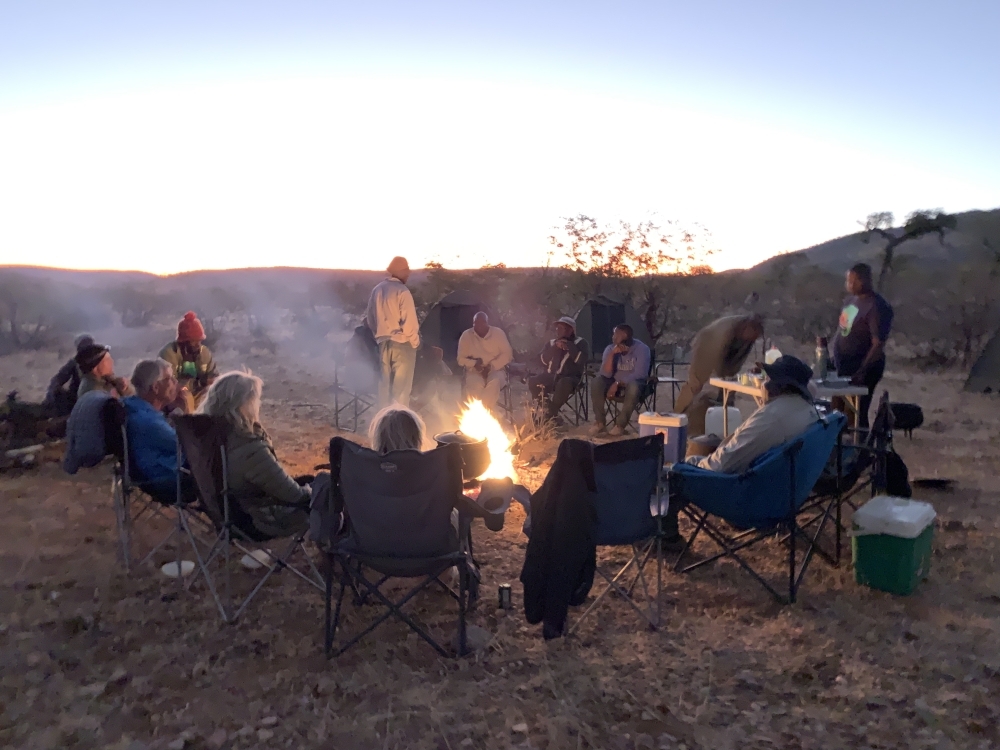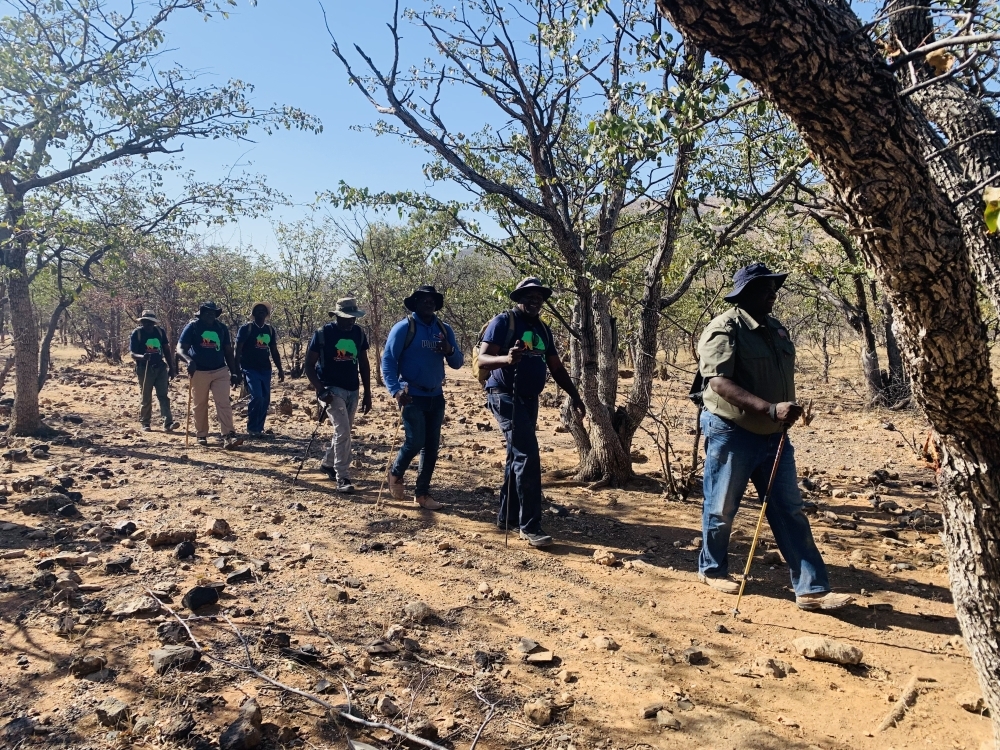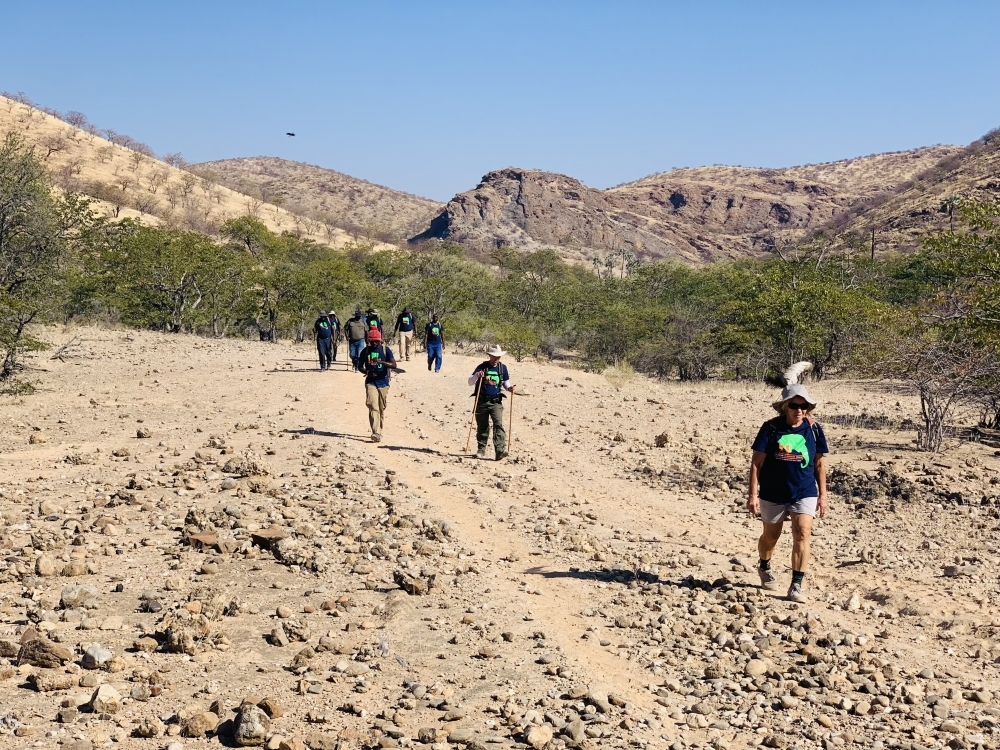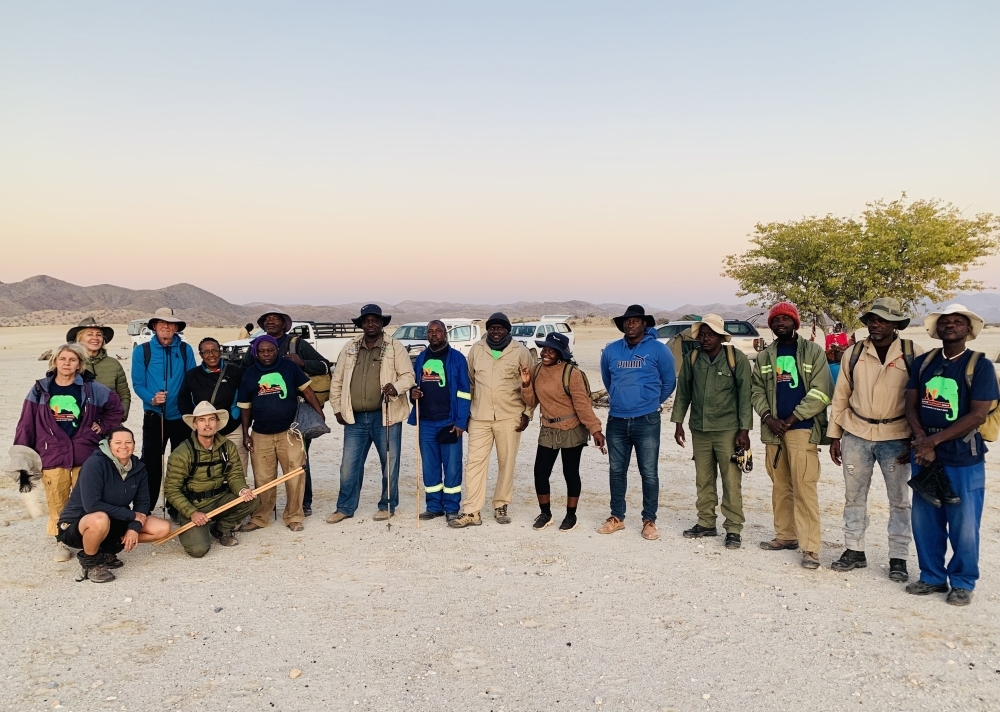Big walk for human-elephant conflict
“In Europe you have watches, in Africa we have time,” said John Kasaona during a 150km fundraising walk in the Kunene region in a bid to mitigate human-elephant conflict.The eager group of hikers, together with a team of community game guards from six Kunene conservancies and representatives of the Rössing Foundation took part in the walk that took place from 5 to 9 July. The purpose was to raise awareness and empower rural communities to live together in peace with the elephants.
In 2021, the director of Integrated Rural Development and Nature Conservation (IRDNC) John Kasaona and his team of community game guards, did the hike to map out the route. This year, TOSCO (Tourism Supporting Conservation Trust) helped organise the walk as well as the fundraiser campaign, which is ongoing until the goal is reached. The funds will be used towards various conflict mitigation projects in these remote conservancies, such as Ongongo, Otjiu-West, Ombuijokanguindi, Ozondundu, Okangundumba and Omatendeka conservancies.
According to one of the participants, the walk was an “amazing and eye-opening experience”, and “more of a community walk than an elephant hike as it was being with the community and sharing our stories and time around the fire that made it special”.
The local chief of the area and the chairlady of the conservancy joined the group for dinner and a discussion was held on the challenges and needs of the local community.
The backup team and kitchen crew did a sterling job of keeping everyone fed and making sure that water bottles were filled in preparation for the first day’s hike, throughout the whole trip.
From the first day of the hike, John – in his unique leadership style – set the pace and the tone for the group. Along the way, participants enjoyed the beauty of the environment of this less-known part of Namibia, and conversations were held along the way with the participating game guards, from whom the team learned a lot about the local fauna and flora.
Contrasts
The group walked through a Himba village and spent time with the community. The beauty was in the contrast of the area, from harsh desert landscapes to woodlands, grasslands, and river gorges shadowed by vast wild fig trees and makalani palms. On day four of the hike, the plan was changed to instead explore caves and waterholes.
One of the participants described Namibia as one of the most fascinating and diverse countries in Africa with unique landscapes and free-roaming wild animals.
The focus was not on getting to the day’s destination nor on finding elephants, but on getting to know the local communities along the way and understanding their challenges. The group walked through a Himba village and spent time with the community.
Participants learned that the biggest challenge in the area is to grow crops for food security, which the elephants find quite delectable. Solar panels and electric fences could ensure communities can get to harvest their crops.
Day five ended with a long discussion on how to continue the fundraiser campaign and how to open up this incredible experience in such an inaccessible area to others. Pledges were made, along with promises to be back next year.
If you would like to contribute to help promote the peaceful co-existence of elephants and rural communities, follow the links below:
International donors: https://www.gofundme.com/f/namibia-mitigating-humanelephant-conflicts
Namibian donors: https://www.today.com.na/give/kunene-elephant-walk-kew











